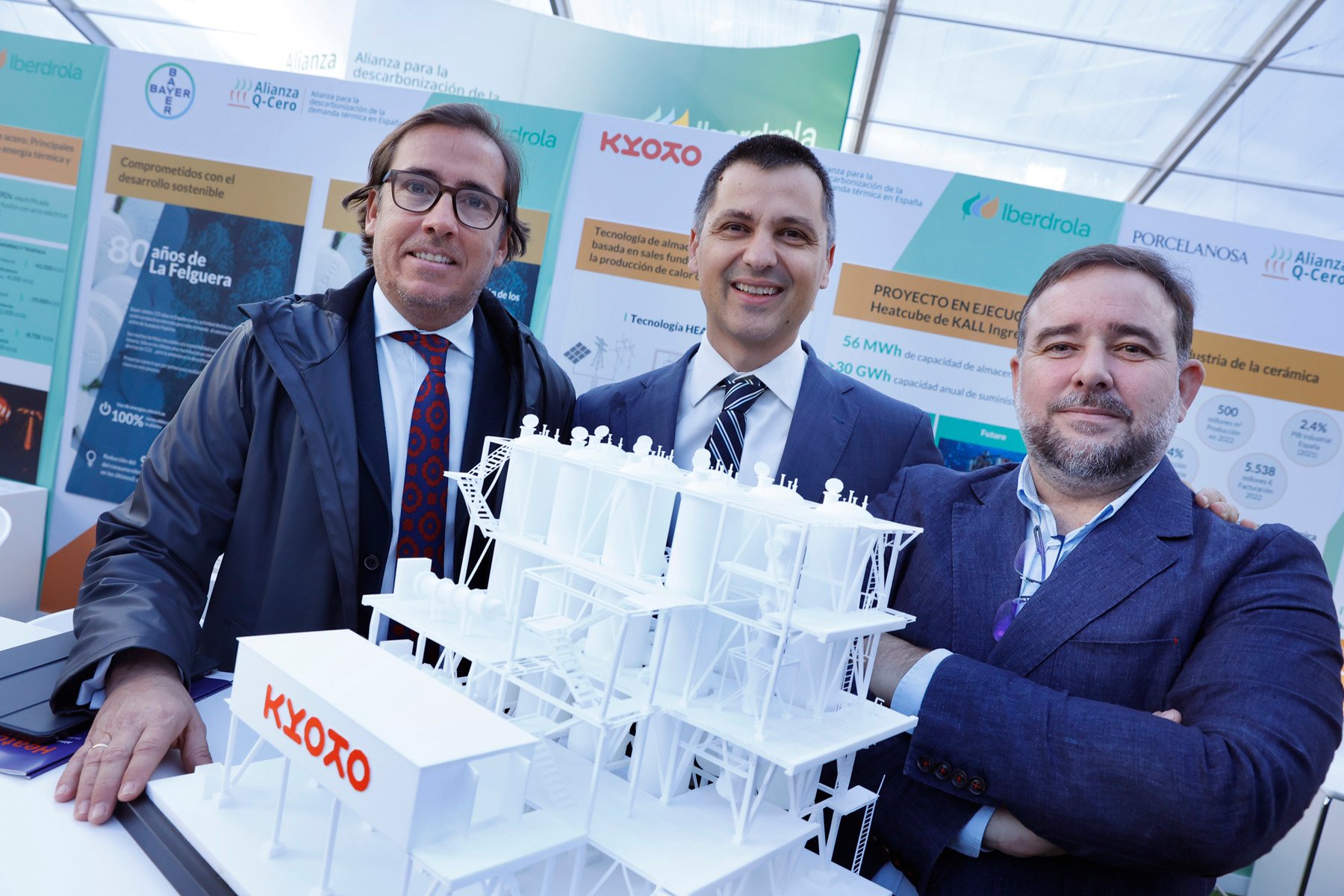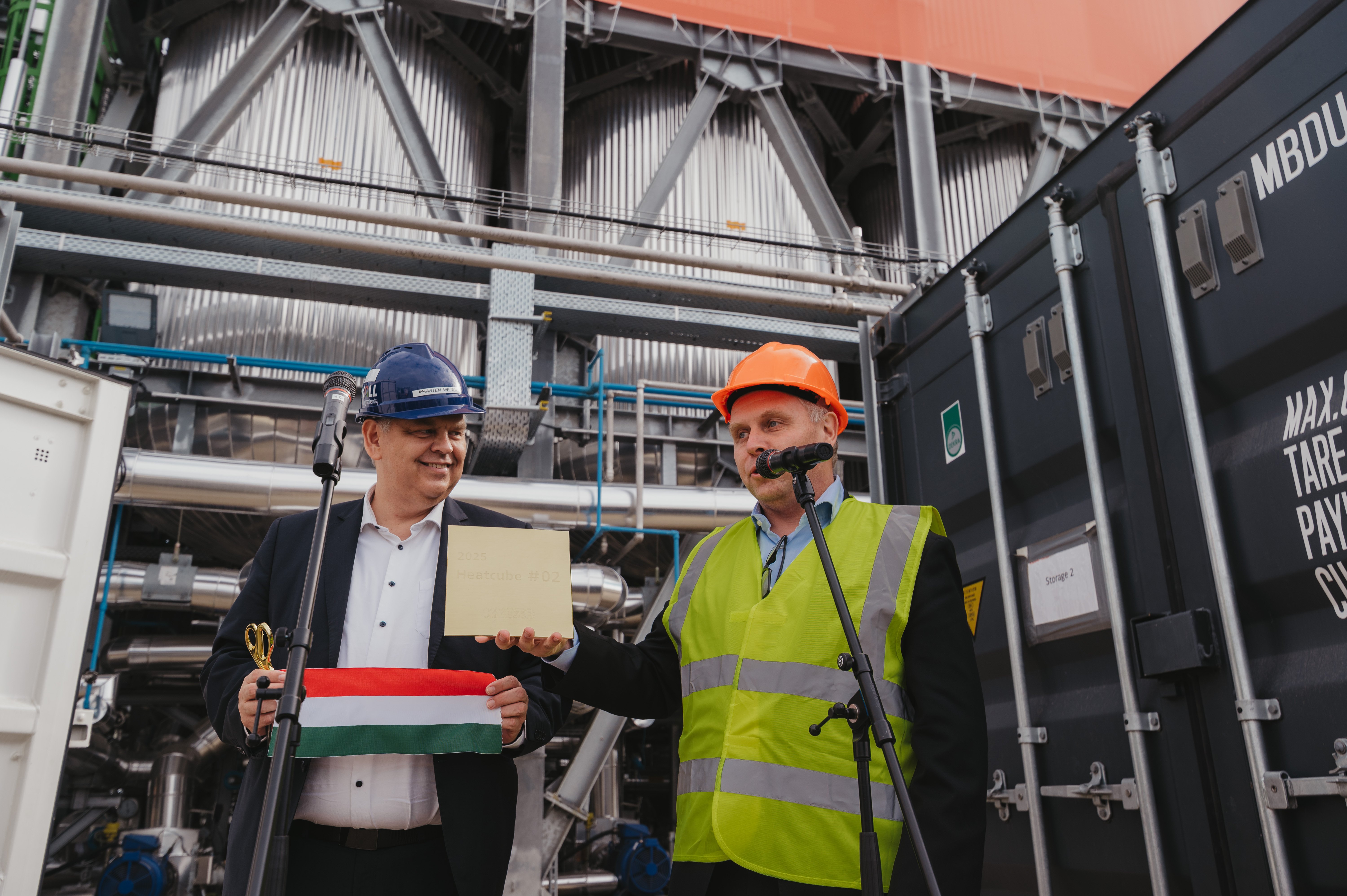Originally published in ABC, Economía by María José Pérez-Barco
Solar thermal power plants have already demonstrated the possibilities of this solution that allows generating electricity when there is no sun or wind.
Thermal storage in molten salts at high temperatures, which can reach up to 565ºC, is the new technological ingredient that completes the recipe for the renewable mix of the future. It is a solution that allows you to generate electricity and heat when there is no sun or wind, at night, on cloudy days or when there is not even a breeze. An essential innovation for a very near scenario, because in 2030 there will be such a deployment of photovoltaic and wind plants throughout the country that they will generate 64% of the energy we need, as planned in the draft of the Comprehensive National Energy and Climate Plan ( Pniec).
Although solar and wind energy are completely clean sources for the environment, they have a weak point: they cannot be managed, meaning that we will only have them when the resource of sun and wind exists. And when they are not operational, on that date we will no longer be able to use the coal plants, which will have disappeared (it is assumed in 2025), nor will we be able to use some nuclear plants, which will have closed as already planned in the calendar. As backup technology there will be combined cycle natural gas and hydraulic plants (subject to the vagaries of the drought), but they will not be enough to guarantee supply and a robust energy system.
Fourth technology
And that is where energy storage comes into play: saving energy when there is sun and wind to consume it when we do not have those resources. In fact, the new Pniec draft states that in 2030 storage will be the fourth technology with the highest installed power (22 GW), behind photovoltaic (76 GW), wind (62) and combined cycle (26).
There are various systems to store energy such as lithium ion batteries, but at the moment they cannot store large amounts of energy for a long time (their average duration is 4 to 6 hours) and they are more expensive, and the hydraulic pumping plants that have geographical limitations and by the water resource itself. So an alternative is to heat molten salts (at temperatures that reach 565ºC), store them in tanks (even more than ten hours) and use their heat to generate electricity when it is needed, for example through a turbine.
With this solution the door opens to many possibilities. The idea is that the salts are heated with the surplus of solar energy that we have at many times and that is not consumed. Or with the energy generated by solar thermal plants. «We would take advantage of the sun during the day to produce electricity at night. Or we would accumulate heat for two or three days in winter to pour electricity into the grid another day,” explains Raúl García, director of Asealen (Spanish Energy Storage Association).
Another advantage that molten salts have is that they will contribute to decarbonizing many thermal industrial processes. «High efficiency heat pumps and electric resistances can heat the salts during the day (using the electricity produced by photovoltaics and wind), that heat would be stored in tanks to be used at night. Or they can be heated over the weekend to use the heat from the salts during work days. This will help reduce gas and diesel consumption in many factories. It could even be transferred to residential heat,” García highlights.
Aluminum, canning, medicine, feed, paper and cardboard, glass factories... would appreciate it. Because they would also save costs. «Two thirds of the energy needed by industry worldwide is in the form of heat. An electric heater can be used to heat the salts overnight or on a Sunday when the price of electricity is cheaper. Store them at 400ºC and circulate them through a generator to produce steam for an industrial process at times when electricity is more expensive. "This way I produce steam without burning gas and help balance the electrical grid when no one consumes energy," says Andrés Barros, general director of Kyoto Iberia, a company of Norwegian origin that develops thermal storage solutions based on molten salts for the industry. What's more, Barros proposes that even old coal plants can be converted to run on molten salts.
Solar thermal experience
Thermal storage in molten salt is not a new technology. It is more than known and proven since it is associated with solar thermal power plants, a sector in which Spanish companies occupy a leading position. Our country has 50 solar thermal plants that were built between 2008 and 2013. A third of them have molten salt tanks. Since then, no new facilities have been built or existing ones expanded.
«There are 16 solar thermal plants that have storage of more than six hours and many of these facilities could expand their storage capacity by around 3% by adding salts to the tanks where the thermal energy is accumulated. Thermal salt tanks can also be installed in those plants that do not have them," says Óscar Balseiro, general secretary of Protermosolar (Spanish Association for the Promotion of the Thermosolar Industry).
This would allow the sun's energy to be transferred from midday to night. «The role of solar thermal power plants in the future in sunny countries will be to replace photovoltaic production during night hours. Furthermore, due to their long-term storage capacity, they can provide synchronous generation, with absolute firmness and without deviations. They can contribute to alleviating the dysfunctions that would be caused by a large penetration of non-manageable renewable technologies and provide the necessary support to the electrical system during night hours," considers Balseiro.
All this experience and knowledge developed in solar thermal has also led to Spain becoming an international benchmark in the thermal storage of molten salts, both in installed systems and in companies that are suppliers of this technology. But "we need to establish schemes so that the activity is profitable, so that storage is established as an industry and that knowledge can be exported to other parts of the world as has happened with the wind industry," says Raúl García.
Opening roads
Our companies are providing new solutions with this technology all over the planet. For example, the Sevillian engineering company Rpow (with offices in Dubai and the United States) participates and develops thermal storage projects in molten salts for both solar thermal power plants and industries. He has used this system to heat an office building of more than 10,000 square meters in Houston. And he has participated in reviewing the project of what will be the largest solar thermal plant in the world in Dubai. "The DEWA project has a production of 750 MW and is designed to store energy for ten hours, it will produce electricity when there is no light," indicates César Martín-Montalvo, Chief Executive Officer of Rpow.
This engineering is also working on using salts to produce green hydrogen. "With photovoltaics and an electrical resistance we heat the salts, we generate steam so that a turbine produces electricity that feeds an electrolyzer where green hydrogen is produced," says Martín-Montalvo. Although thermal storage in molten salt is still in its infancy in the industry, it is where Rpow sees the most potential. “It is an unstoppable trend throughout the industrial sector,” he says.

The modular system based on molten salts that the Kyoto company has devised and that can be installed in small and medium-sized factories.
Modular system
Rpow has also worked with the Norwegian company Kyoto to design a fully modular system that generates heat for industrial processes based on molten salts. Its commercial name is Heatcube. «It is for small and medium-sized companies, because it allows you to configure more or fewer tanks depending on needs. We have added calcium nitrate to the salts, which allows us to change the solidification temperature of the salts from 240ºC to 190ºC, so it is always liquid in the operating range that interests us," explains Andrés Barros.
Heatcube is already operational in a factory in Denmark, and is being planned for a syrup factory in Hungary. It has aroused the interest of Iberdrola, which has become a Kyoto shareholder. "We will probably soon see these projects in Spain," believes Barros.
The Asturian engineering company TSK builds power generation plants in several countries, including solar thermal plants with tanks for the thermal storage of molten salts, such as the one it is building in Shagaya, in the heart of the Kuwait desert.
TSK has developed the technology to build what will be the world's first hybridization plant that will combine solar thermal with photovoltaics and molten salt storage. It is the Midelt project in Morocco. «It will use the advantages of each technology: the price of photovoltaics and the storage capacity of solar thermal. We have managed to find a cheaper solution and it allows us to have energy when we need it, thus overcoming the weakness of photovoltaic,” highlights Jiménez. «Once I have the tanks, it is easy to attach a solar thermal plant at a competitive cost, and the extra cost for installing the solar field is not large. “This way we can manage energy when there is no resource or there is a surplus,” says Rogelio Peón, Technology Director of TSK.
Experience
The new Coxabengoa Group has extensive experience in storage based on molten salts since 2008. Its CV includes what was the largest parabolic trough plant in the world with this technology (Solana, in the USA). Now "we are in the process of analyzing storage systems with molten salts for industrial heat. A market that is still not very mature,” says Jesús Santos Egea, CEO of Coxabengoa Energy EPC.
This technology, he continues, “is positioned as a solution to be used as storage of process heat or industrial heat. "The residual heat from part of industrial processes is used and then used in other parts of the process as a source of heat or steam, allowing the plant's energy demand to be reduced as well as its decarbonization." Among its advantages, it stands out that salts allow energy to be stored for long periods (more than ten hours) and have a longer useful life than other types of storage (up to three times).
An essential solution for unmanageable renewables to dethrone fossil fuels from their reign.


